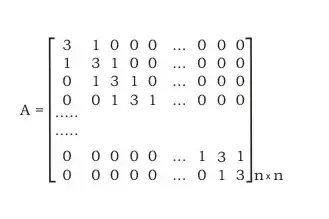Let $A$ be an $n × n$ matrix of the following form.
What is the value of the determinant of $A$?
My attempt:
I've used brute force to identity correct option. When I put $n=1$, then determinant of $A$ should be and options give $5, 7, 3, 3$ respectively. Since, options $(3)$ and $(4)$ return same value.
So, I put $n=2$, then determinant of $A$ should be $8$ and option $(3)$ and $(4)$ return $7$ and $8$ respectively. So, option $(4)$ is correct.
Can you explain in formal way? Please.




